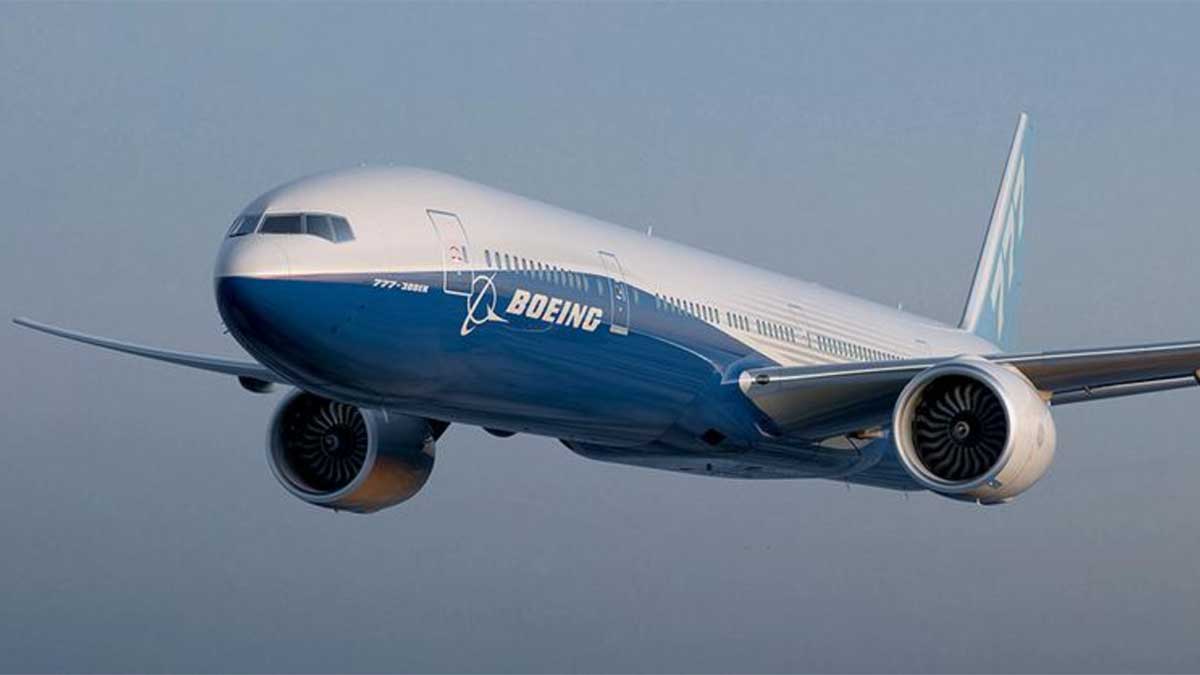The Boeing 777-300ER is the largest and most popular variant of Boeing’s family of twin-engine giants. Its dimensions are almost 74 meters long and 65 meters wide.
This aircraft ushered in the era of twin-engine long-haul giants. The first 777-200 was delivered to United Airlines in 1995. This copy, by the way, is still flying. Due to its huge popularity with airlines, more than 1,500 passenger and cargo variants were sold. It can carry large numbers of passengers and cargo over long distances using only two engines.
In 2024, the Boeing 777 will celebrate the 30th anniversary of its first flight, and in 2025, the next generation of mega-twins, the Boeing 777X, will appear.
Here are six incredible facts about the Boeing 777.
Its engines are the most powerful in the world
The only engine option on the 777-300ER is the General Electric GE90-115B.
The turbine with blades with a diameter of 3.25 meters is only a few centimeters smaller than the diameter of the Boeing 737 fuselage.
The 777 is the first Boeing to be controlled via a computer.
All levers, joysticks, and buttons in the cockpit are connected to computers that control the mechanical parts of the aircraft. This principle is called fly-by-wire.
Airbus overtook Boeing in control-by-wire technology with the introduction of the A320 in the late 1980s.
The next Boeing to use the fly-by-wire control principle is the Boeing 787. It uses the 777 technology.
The aircraft can accommodate more than 500 passengers
Japan’s two largest airlines operated Boeing 777-300s that carried 500 or more passengers, an incredible number for a twin-engine, single-deck aircraft.
All Nippon Airways operates 777–300 domestically. It seats 514 passengers: 21 in premium class and 419 in economy class. Before their retirement during the pandemic, Japan Airlines’ 777-300s carried 500 passengers: 78 in business class and 422 in the economy.
At one time, ANA operated a fleet of Boeing 747-400s with a capacity of 567 passengers. But this plane has twice as many engines – four.
The 777-300ER has the same fuselage as the 777–300 but has an entirely new wing, extra fuel, and different takeoff and landing weights. Together, all this leads to a more productive option.
Japanese ANA operates 777-300ER with the smallest capacity
Of course, the ANA uses the 777 in a variety of missions.
For example, an airline squeezes 514 passengers into a 777–300 used on short-haul routes.
On the other hand, one of the 777-300ER ANA configurations has only 212 seats – less than half of the usual. This option uses ANA’s The Room business class.
The shortest route 777 is only 72.5 km
The letters ER in the name 777-300ER means extended range, that is, a comprehensive range of action. That doesn’t matter to Dutch KLM, however, on the short 72-kilometer, 35-minute flights it makes three times a week in Tanzania. This route runs between Abeid Amani Karume International Airport (ZNZ) in Zanzibar and Julius Nyerere International Airport (DAR) in Dar es Salaam. The flight is operated as a segment of a triangular route between Amsterdam Airport Schiphol (AMS), ZNZ, and DAR. KLM does not operate any local transportation or cargo between the two airports.
The longest route 777 is 13,402 km
Saudia’s flight from King Abdulaziz International Airport (JED) in Jeddah, Saudi Arabia to Los Angeles International Airport (LAX) is the longest 777 flight in the world and one of the longest on the planet. Travel time is over 16 hours.
Interestingly, the 777-300ER is not the longest variant of the 777. That honor goes to the 777-200LR, whose name comes from long range. The passenger version of the 777-200LR was a commercial failure with only 61 delivered. However, the 777-200LR is the platform used for the cargo variant of the 777 – 777F, which has been much more successful with 212 delivered as of September 30, 2022.
The second longest 777 flight in the world is operated by a 777-200LR. The 13,140 km daily Emirates flight between Dubai International Airport (DXB) and George Bush Intercontinental Airport (IAH) in Houston also takes over 16 hours.

